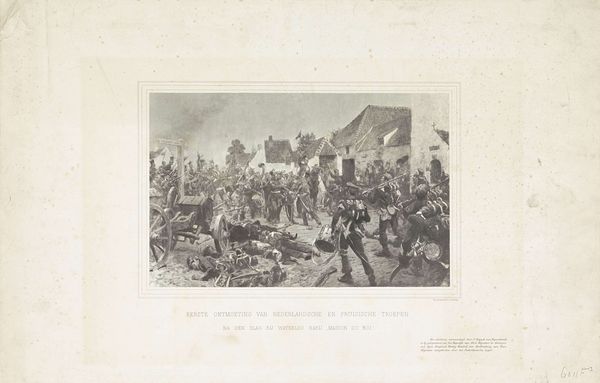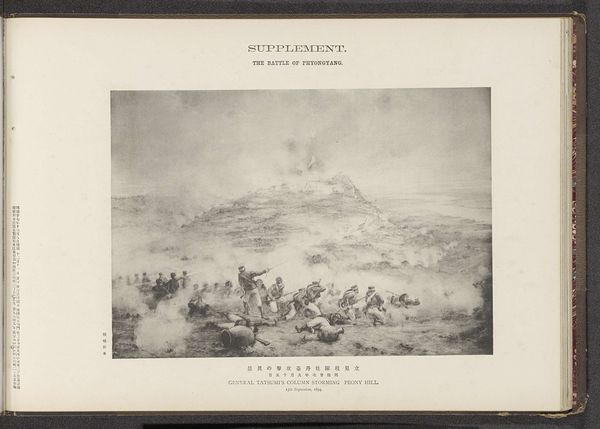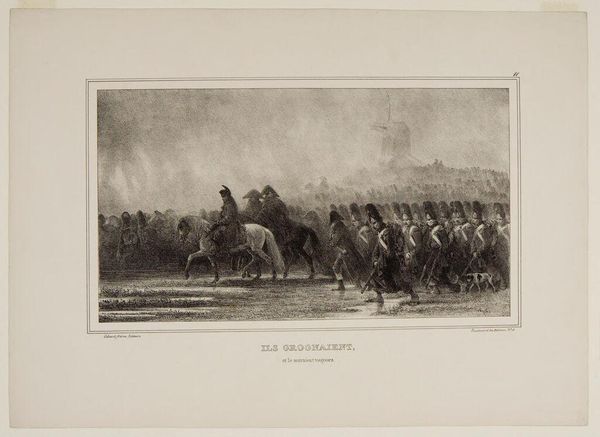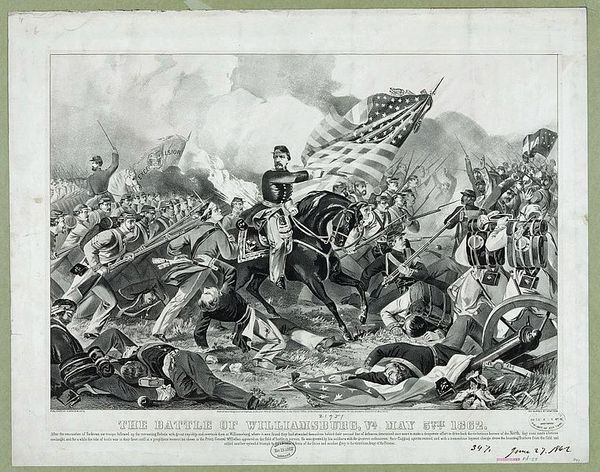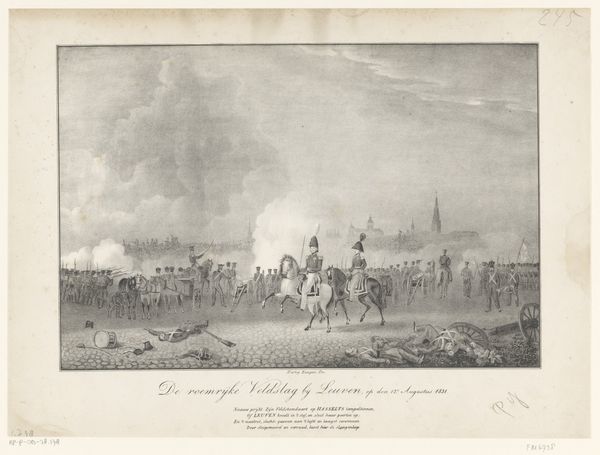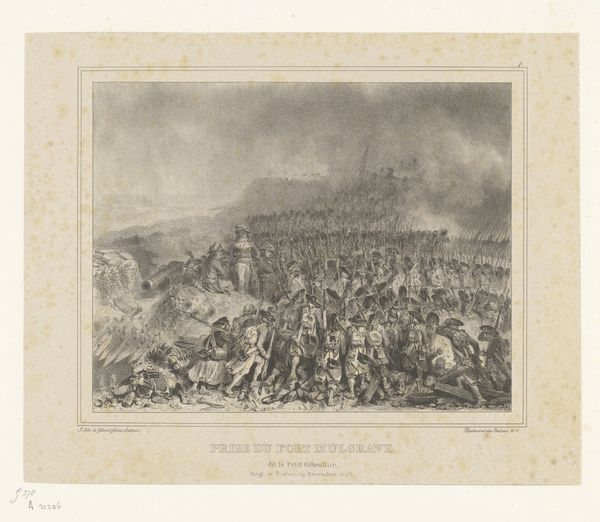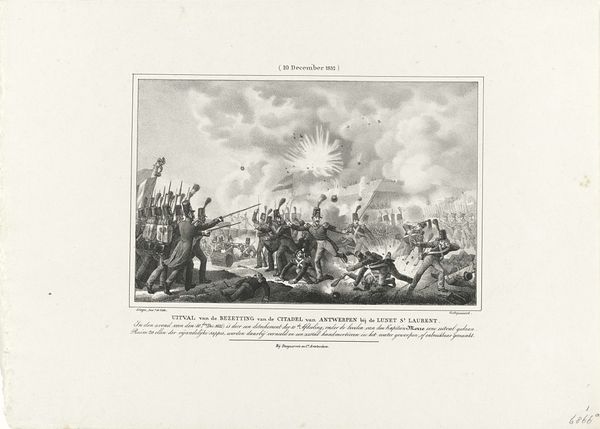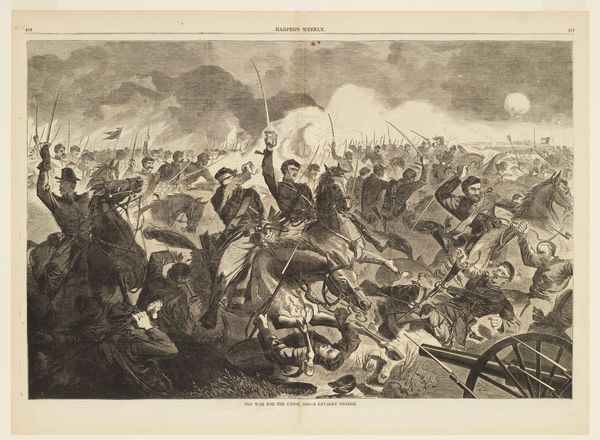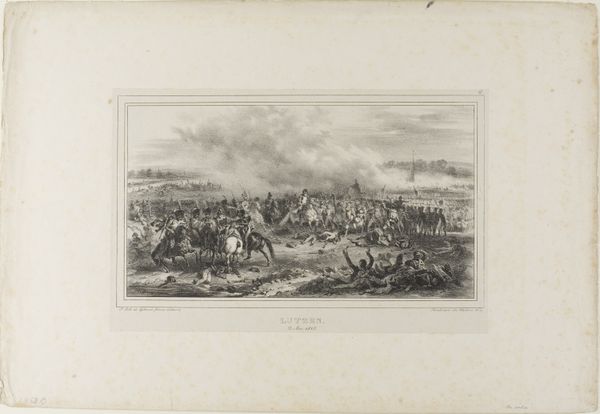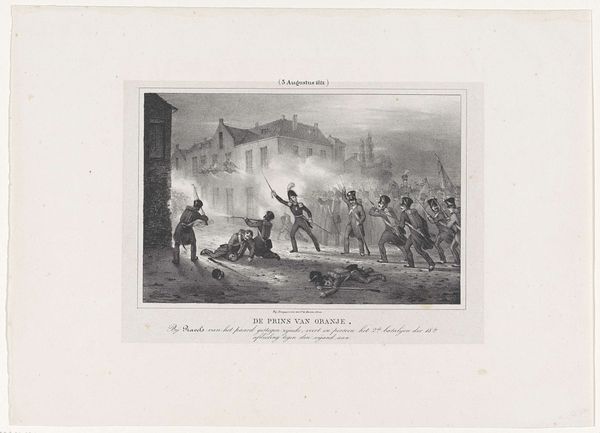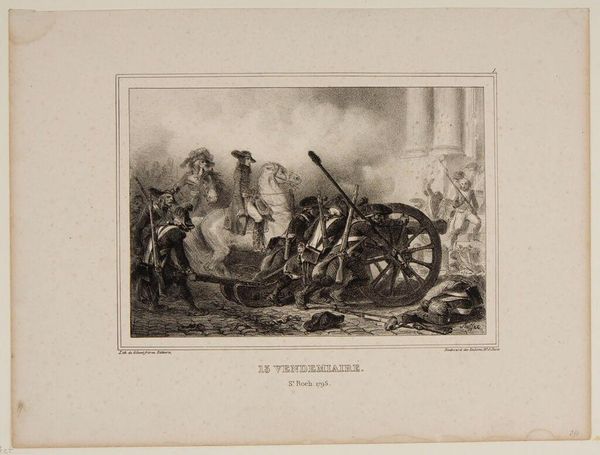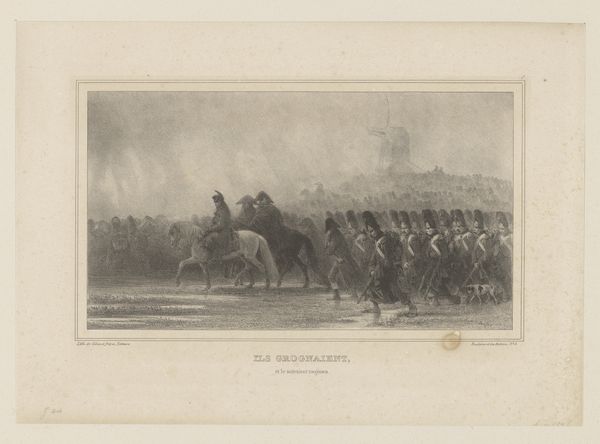
The charge of the Japanese infantry upon the Chinese camp at Kangwasai before 1895
0:00
0:00
print, photography, engraving
#
narrative-art
#
ink paper printed
# print
#
asian-art
#
war
#
landscape
#
photography
#
history-painting
#
engraving
#
realism
Dimensions: height 160 mm, width 281 mm
Copyright: Rijks Museum: Open Domain
Editor: We’re looking at "The Charge of the Japanese Infantry upon the Chinese Camp at Kangwasai," made before 1895. It seems to be a print, maybe an engraving or photograph reproduction. It's quite chaotic, depicting a fierce battle scene. How do you read this image, especially in its historical context? Curator: It’s vital to acknowledge the power dynamics at play here. This image isn't just a neutral depiction of war; it’s a carefully constructed narrative, likely intended to glorify Japanese military power during a period of expansionism. What’s interesting is how the print functions as propaganda, normalising and perhaps even celebrating violence against the Chinese. How do you think this imagery would have been received at the time? Editor: I guess it would depend on where it was viewed and by whom. In Japan, probably very differently than in China. The ‘heroic’ charge would probably have seemed aggressive and invasive to those experiencing it. Curator: Exactly. And we have to consider the absence of Chinese perspectives in this visual representation. The focus is solely on the Japanese infantry, their supposed bravery, almost erasing the humanity of the Chinese soldiers. Consider whose story is being told and, more importantly, whose is being silenced. What does it tell us about the gaze and the creation of history through images like these? Editor: It feels like the image participates in dehumanising one side and celebrating the other, cementing a specific narrative of the conflict. It also feels wrong to even describe the landscape, since its aesthetic value here is secondary to the politics. Curator: Precisely. Reflecting on the image, it highlights how art can serve as a tool for shaping public opinion and justifying political agendas, often at the expense of marginalised groups.
Comments
No comments
Be the first to comment and join the conversation on the ultimate creative platform.

